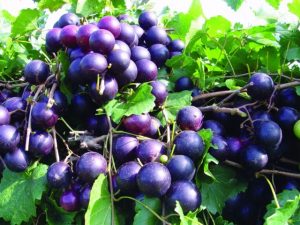 Have you been lucky enough to try Florida wines?
Have you been lucky enough to try Florida wines?
If you have not tried Florida’s local wines, you’re not alone. Many Floridians that have lived in the state for a long time are surprised to find that Florida grows and produces its own wine. The wine producers of the state have been working hard to change this.
As it turns out, Florida has a very rich and long history making wine. In fact, Florida is the oldest wine producer in North America. Yes, it’s true. The first wine production occurred in the 1500s at Fort Caroline near Saint Augustine. A group of French settlers cultivated and produced the first known wine in North America using the native Muscadine grape. Wow! So Florida grows its own wine and is home to the earliest wine production on this continent. What else?
The Florida wine industry has been steadily growing. It is now recognized by the state as a key economic factor adding almost a billion a year to the state’s economy, and according to the US, Alcohol Tobacco Tax Bureau is ranked 9th in the nation for wine production.
That’s not all, Florida’s wine industry has finally begun to be noticed, and not just in the US, but around the world. In 1968, John A. Mortensen at the University of Florida’s Central Florida Research and Education Center, crossed the Golden Muscat with the Muscadine to create Blanc du Bois. It is this varietal that has helped Florida achieve international recognition. In 2002, Blanc du Bois earned its first double gold at the 1998 Indy International Wine Competition, the nation’s third largest. Out of 2,147 wines from 19 countries, the wine was one of the 40 best and consistently continues to win awards.
The Muscadine grape is what allows wine to be produced in Florida. It is a native species and as such makes it uniquely American, as most wines grown in California are not native, but were transplanted from Europe. The Muscadine has a number of unique qualities that allow it to survive and thrive in Florida’s climate. Many of the standard varieties of grapes require cold periods known as the chilling time to properly germinate and blossom. The Muscadine needs a very short chilling period. Also due to its very thick skin, it not only tolerates the heat but loves it. Finally, the Muscadine is very resistant to Pierce’s disease, a vine killing bacteria that is prevalent in all of the southern states.
 The Muscadine’s thick skin not only protects it from the sun, but it adds great health benefits. Most red wine drinkers have heard that red wine has health benefits including reducing blood pressure, cancer resistance and others. It is the skin of the grape that provides all of these benefits, and the Muscadine grape is much thicker so it triples the benefit dose. Last but not least, the Muscadine is sweet. It is this sweetness that many have come to love, and why many wine connoisseurs dismiss Florida wine as not being a serious wine. But then who wants to be serious?
The Muscadine’s thick skin not only protects it from the sun, but it adds great health benefits. Most red wine drinkers have heard that red wine has health benefits including reducing blood pressure, cancer resistance and others. It is the skin of the grape that provides all of these benefits, and the Muscadine grape is much thicker so it triples the benefit dose. Last but not least, the Muscadine is sweet. It is this sweetness that many have come to love, and why many wine connoisseurs dismiss Florida wine as not being a serious wine. But then who wants to be serious?
In addition to wines from the uniquely Florida Muscadine, Florida also is one of the few places that produce wine from standard grape varieties blended with tropical fruit. Again, who wants to be serious?
 Common fruits used to produce Florida wine include strawberry, key lime, blueberry, mango, and lychee, among others. Key lime. What’s not fun about that? Sometimes wine is produced with only the fruit, and other times wine is infused with the fruit.
Common fruits used to produce Florida wine include strawberry, key lime, blueberry, mango, and lychee, among others. Key lime. What’s not fun about that? Sometimes wine is produced with only the fruit, and other times wine is infused with the fruit.
Each year, Florida gains more awards and recognition for its unique wines and creativity and it shows no sign of slowing down. So raise your glass and enjoy a locally grown, locally made wine.
Check back next month for a review of Florida’s unique wineries.

